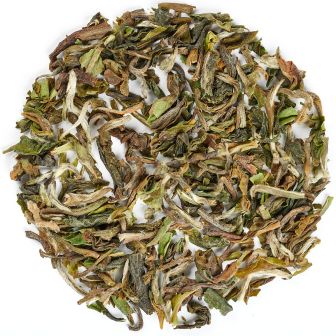#1Swedens oldest online teshop
Checkout using your account
Checkout as a new customer
Creating an account has many benefits:
- See order and shipping status
- Track order history
- Check out faster
Darjeeling – great Indian tea
Darjeeling is know as perhaps the most exclusive tea district. The taste is light and refreshing with a flowery or fruity note. Darjeeling is a small district in northern India, and the around 80 tea estates together produce only around 10 000 ton, which is very little. Especially the first pick of the year, the first flush, is a delicacy. The arrival of the first flush is a happening in the tea world.
The first flush is normally not completely oxidized. As a result, the leaves are often greenish, and with a wonderful flowery aroma. In order to get the best out of the first flush, one should not heat the water to more than 85-95 °C.
Most Popular Right Now
What is Darjeeling?
Darjeeling is a tea district in West Bengal in northeast India, on the slopes of the Himalayas, where the conditions are perfect for growing tea. The temperature is fairly consistent, the soil is nutritious, and there is plenty of rainfall. The Englishmen began growing tea here in the mid-19th century, and soon Darjeeling tea gained a reputation as one of the finest teas available. If you've heard the expression "the champagne of teas", then Darjeeling is what id referred to. In addition to the special taste (and price!), the golden yellow color of the brewed tea has helped.
There are around 80 plantations in Darjeeling, but not all of them are active. Due to the high altitude, the conversion to organic production has been relatively successful here. The fact that the teas cost a lot of money has of course also helped. Most plantations are centered around a tea factory, which processes the leaves after harvesting.
Join us on our visit to Darjeeling, and see how tea is made (sorry, Swedish only!):
What is Darjeeling First Flush?
The first harvest of the year is called the First Flush, and occurs during March-May before the monsoon in early June. It is only slightly oxidized, and is often very floral. In the past, the second flush was considered the best, as it has a fuller flavor than the first flush.
How darjeeling tea is made (see also the video above).
After picking, the tea leaves are left on a grid while hot air blows through. This process, called withering, reduces the moisture content of the leaves and makes them soft.
The leaves are then rolled in a large machine. Although the leaves are not torn apart, the cell walls are broken up and plant juices are squeezed out.
The leaves are now laid out on sheets and exposed to the air, and oxidation takes place over a few hours. In simple terms, shorter molecular chains are combined into longer ones. The leaves darken and the flavor becomes more complex.
After oxidation, the leaves are dried in an oven for a few minutes.
The leaves should then be sieved so that they come in different size grades. The different grades are packed in sacks of 20-25 kg and are then ready for transportation.
How to pronounce Darjeeling?
The name Darjeeling is composed of two words in a local language, dorje and ling, meaning thunder and place respectively. Simply, the place where there is thunder. Phonetically it is written as dɑːʤɪ́jlɪŋ, but it can be a bit tricky to interpret. So one way to show the pronunciation is "Daa-djii-ling".












